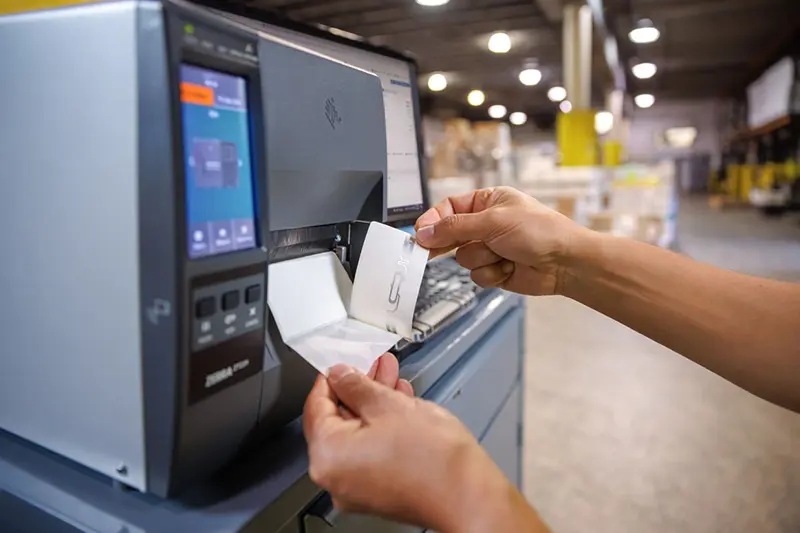
For modern supply chains, speed and accuracy are everything. Yet a large portion of warehouses still rely on batch label printing—leading to wasted labels, costly errors, and slowdowns on the floor. On-demand label printing is changing that.
By printing labels exactly when and where they’re needed, companies can reduce label waste by up to 30%, cut printing costs, and improve order accuracy by more than 25%. Whether you’re managing inventory, fulfilling orders, or shipping across multiple channels, deploying labels on demand can unlock serious efficiency gains and help future-proof your operations.
Assessing Labeling Requirements
Before implementing a label-on-demand system, it is crucial to assess your supply chain’s labeling requirements. Identify the types of labels needed, such as product labels, shipping labels, and compliance labels. Determine the data that must be included on each label, such as product information, barcodes, serial numbers, and expiration dates. Consider the label sizes and formats required to accommodate various product packaging and shipping containers.
Additionally, analyze the labeling frequency and the number of labels needed per day to ensure that the label-on-demand system can handle peak demand periods without delays. Understanding your labeling needs is the foundation for a successful label-on-demand solution that meets your supply chain’s unique requirements.
Selecting the Right Label-on-Demand Technology
Choosing the appropriate label-on-demand technology is critical to ensure seamless integration with your existing supply chain systems. There are several options available, ranging from standalone label printers to integrated label-on-demand solutions.
Standalone label printers: These printers are ideal for smaller operations or specific labeling needs. They can be placed strategically throughout the warehouse or production facility to generate labels as needed.
Integrated label-on-demand solutions: For larger and more complex supply chains, integrated solutions that connect directly to your Warehouse Management System (WMS) or Enterprise Resource Planning (ERP) software are preferred. These solutions enable automatic label generation and printing triggered by predefined events, such as product shipments or order processing.
Integrating Labels on Demand with Existing Systems
To fully leverage the benefits of label-on-demand, seamless integration with your existing supply chain systems is essential. Integration ensures that accurate data is captured and translated into labels without manual intervention, reducing the risk of errors and increasing operational efficiency.
For integrated label-on-demand solutions, work with your IT and software teams to establish communication protocols between your WMS, ERP, or other inventory management systems, and the label printing software. This will enable automatic label generation based on real-time data, such as order information, product details, and shipping addresses.
Implementing Barcode and RFID Technology
Barcode and RFID technologies are powerful tools that complement label-on-demand solutions. By incorporating these technologies into your labeling system, you can enhance inventory visibility, automate data capture, and improve overall supply chain traceability.
Barcodes
Barcodes are cost-effective and widely used for product identification and tracking. Implementing barcode technology on labels allows for accurate and rapid data capture, reducing manual data entry errors and streamlining inventory management processes.

RFID
RFID technology offers a higher level of automation and real-time tracking capabilities compared to barcodes. hardware including RFID tags can be embedded in labels, enabling wireless and contactless identification of products throughout the supply chain. This facilitates faster and more accurate tracking of inventory, reducing the need for physical scans and manual data updates.
Ensuring Labeling Compliance
In certain industries, regulatory compliance plays a critical role in labeling requirements. Labels must adhere to specific standards and regulations to ensure product safety, traceability, and authenticity.
Work with regulatory experts to ensure that your label-on-demand solution meets all relevant compliance standards for your industry. This includes label formats, information, and any required certifications or barcoding guidelines.
Training and Support
A successful label-on-demand deployment relies on adequately training your employees and providing ongoing support. Conduct training sessions to familiarize personnel with the new label printing process and ensure they understand the system’s capabilities and benefits.
Offer continuous support to address any challenges or questions that may arise during the label-on-demand implementation. By ensuring your staff is proficient in using the system, you can maximize efficiency and minimize downtime caused by labeling issues.
Conclusion
Deploying labels on demand for your supply chain is a strategic move that can significantly improve operational efficiency, enhance inventory visibility, and increase customer satisfaction. By assessing your labeling needs, selecting the right technology, integrating with existing systems, and adhering to regulatory requirements, you can streamline your supply chain operations and gain a competitive edge in the market.
Better Labeling, Faster Printing.
Ensure every label is accurate, compliant, and printed without delays. Discover how CYBRA’s barcode and printing solutions streamline operations and eliminate errors.















 RFID Cage
RFID Cage